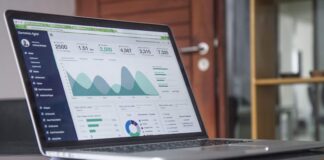Understanding AI in the AI-driven analytics is becoming essential for organizations navigating the future of data science and business intelligence. As businesses increasingly lean on insights to make decisions, the role of AI in the AI-driven analytics becomes central to extracting value, predicting outcomes, and automating strategy. In an era where data outpaces human analysis, AI in the AI-driven analytics isn’t just enhancing how we view data—it’s redefining how we act on it.
1. AI Transforms Raw Data into Actionable Intelligence
Traditional analytics platforms often require skilled analysts to structure data, generate reports, and interpret meaning. AI automates this entire process. Through machine learning and natural language processing (NLP), AI systems digest raw, unstructured data and turn it into digestible insights instantly.
From sensor data in manufacturing to customer reviews on e-commerce platforms, AI recognizes patterns and anomalies that humans may overlook. The result is not just faster insights, but smarter ones—enabling organizations to act in real-time rather than reacting post-event.
2. AI Enables Predictive and Prescriptive Analytics
While most businesses are familiar with descriptive analytics—explaining what happened—AI unlocks the power of predictive and prescriptive analytics. AI forecasts what will happen next and recommends the best course of action.
For example, AI in supply chain analytics can forecast demand spikes and suggest inventory restocking ahead of time. In marketing, AI can predict which leads are most likely to convert and recommend specific outreach methods. This forward-looking capability helps companies move from reactive to proactive strategies.
3. AI Enhances Real-Time Decision-Making
In high-stakes industries like finance, healthcare, and logistics, decisions must be made instantly. AI-driven analytics platforms continuously ingest and analyze data streams—stock prices, patient vitals, shipment locations—and deliver recommendations on the spot.
Whether it’s executing a high-frequency trade or redirecting a delivery route due to weather, AI empowers organizations to act swiftly with confidence. These systems adapt and learn from each new piece of data, making real-time insights smarter over time.
4. AI Democratizes Data Access Across the Organization
Previously, advanced data analysis was limited to data scientists and BI professionals. With AI-powered platforms, even non-technical users can ask complex questions and receive accurate answers using natural language.
For instance, a sales manager might ask, “Which product category grew the most in Q2?” and receive a visualized report within seconds. This democratization of analytics increases data literacy across the organization and ensures decisions are informed at every level.
5. AI Detects Anomalies Before They Escalate
Anomaly detection is one of AI’s most impactful capabilities in analytics. Whether it’s identifying fraud in financial transactions, detecting a dip in website traffic, or noticing a sudden shift in user behavior, AI flags issues before they become crises.
These models learn what constitutes “normal” behavior and immediately alert teams when deviations occur. This early-warning system can save organizations millions and protect brand reputation by enabling preventive action.
6. AI Personalizes Customer Experiences at Scale
AI-driven analytics doesn’t just improve back-end efficiency—it dramatically enhances front-end engagement. By analyzing customer data in real time—browsing history, purchase behavior, support interactions—AI can help deliver hyper-personalized content, offers, and support.
E-commerce platforms can recommend products tailored to each shopper. Streaming services can curate watchlists unique to individual tastes. AI takes personalization from a manual effort to an automated, scalable advantage that boosts loyalty and lifetime value.
7. AI Integrates with IoT for Deeper Operational Intelligence
The rise of Internet of Things (IoT) devices has flooded industries with data—temperature readings, machine cycles, GPS coordinates, etc. Alone, this data is overwhelming. Paired with AI, it becomes transformative.
Manufacturers use AI to detect patterns in machine wear and predict maintenance needs. Smart cities use AI to optimize traffic flow based on real-time sensor data. Logistics firms route deliveries dynamically, responding to changes on the ground. AI ensures IoT data translates into strategic insight, not just noise.
8. AI Simplifies Complex Data Visualizations
Understanding data often depends on effective visualization. AI-powered platforms don’t just create graphs—they choose the most relevant format based on user needs, audience, and data complexity.
Rather than manually selecting a chart type, users can rely on AI to automatically generate interactive dashboards, summaries, or presentations. Some platforms even explain trends and outliers in plain language, helping teams understand the “why” behind the “what.”
9. AI Reduces Bias and Improves Data Governance
Bias in analytics can lead to flawed strategies and poor decisions. AI helps mitigate this by automating data validation, identifying outliers, and ensuring consistency across datasets.
Governance tools powered by AI enforce data quality rules, track lineage, and flag discrepancies. Moreover, explainable AI (XAI) ensures that insights are transparent—users can see how conclusions were reached, fostering trust and compliance with data privacy regulations like GDPR or HIPAA.
10. AI Facilitates Scalable, Cost-Effective Analytics
As businesses grow, so do their data needs. AI scales effortlessly across cloud environments, enabling analytics at enterprise scale without a corresponding increase in manual labor.
AI tools manage data ingestion, model training, validation, and deployment with minimal human input. This automation reduces costs while increasing throughput. SMBs and large enterprises alike can benefit from enterprise-grade analytics without needing an army of data scientists.
Conclusion
What we traditionally thought of as analytics—static dashboards, historical trends, and manual reporting—is being entirely reimagined by AI. Understanding AI in the AI-driven analytics is crucial not just for IT departments, but for marketing teams, operations managers, CFOs, and decision-makers across the enterprise. With every advancement, AI in the AI-driven analytics makes insight faster, more accurate, and more accessible. And as the digital world becomes increasingly complex, organizations that embrace AI in the AI-driven analytics will be the ones who thrive.
AI doesn’t just improve analytics—it reshapes it into a dynamic, living system that learns, evolves, and guides. From predicting the future to explaining the past in plain language, AI is the silent force turning data into decisions. The question is no longer whether to integrate AI into analytics—it’s how quickly you can do so to stay ahead of the curve.














